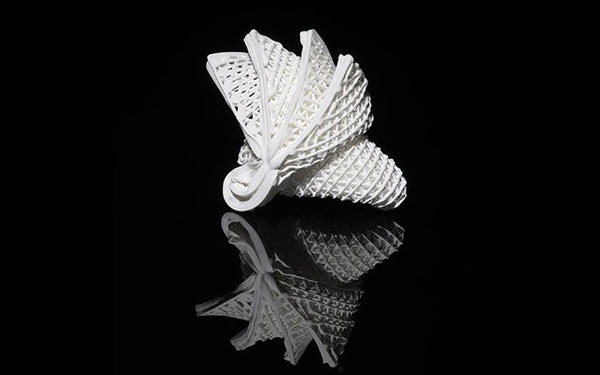The world of 3D printing has come a long way since its inception in the 1980s. From plastic prototypes to precise metal structures, this technology has revolutionized several industries, including manufacturing, healthcare, and aerospace. As the technology continues to advance, so do the materials used in the process. One such material that has gained significant momentum is ceramic.

Ceramic 3D printing is an exciting development in the 3D printing world. While traditional ceramic production has its limitations, 3D printing makes it possible to create complex shapes and designs with high accuracy and precision. This means that the technology can be utilized across several industries, including healthcare, construction, and aerospace.
Ceramics offer several properties that make them ideal for use in 3D printing. They are lightweight, durable, heat-resistant, and electrically insulating, making them suitable to use in extreme environments. Ceramic materials can withstand high temperatures, making them ideal for creating parts and components for engines and turbines.
Ceramic 3D printing is a relatively new process, and there are currently several ways to achieve it. One method is binder jetting, which involves depositing layers of ceramic powder and a binding agent to create a 3D model. Another is stereolithography, which utilizes a laser to cure layers of ceramic resin to form a solid part.
One such ceramic paste that has gained popularity among Ceramic 3D printing enthusiasts is Fiberfrax Ceramic paste. Fiberfrax Ceramic paste is a high-performance ceramic compound that features excellent strength, dimensional stability, and thermal shock resistance. It is a versatile material that can be used to create complex designs, thanks to its ability to hold intricate shapes.
Fiberfrax Ceramic paste provides several advantages to users, including better surface finish, reduced wastage, and improved production time. The material is also economical and can be used to produce high-quality components at a lower cost than traditional ceramic production methods.
In conclusion, Ceramic 3D printing has opened up several new possibilities for several industries with its unique properties and versatility. The process has enabled companies to produce complex shapes and designs with high accuracy and precision, saving them time and costs. As technology continues to evolve, we can expect even more advancements in Ceramic 3D printing, making it a game-changer for the industry.
Keywords: Ceramic 3D Printing, Fiberfrax Ceramic Paste, Technology, Manufacturing, Aerospace.